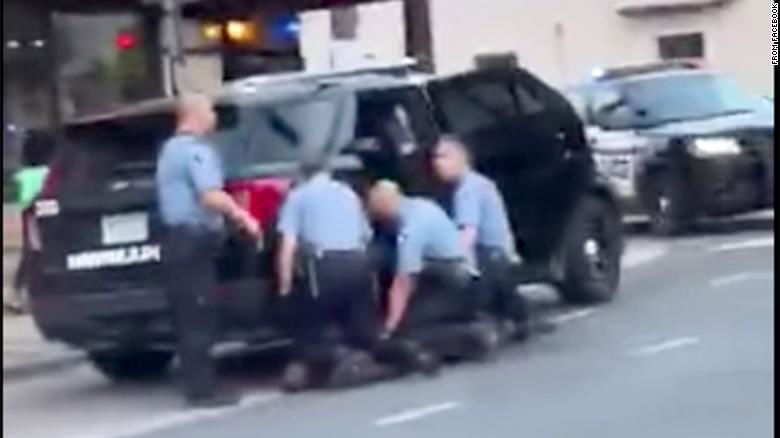Murder charge upgraded against officer in George Floyd death, other 3 officers charged

MINNEAPOLIS, Minnesota — Prosecutors are charging a Minneapolis police officer accused of pressing his knee against George Floyd’s neck with second-degree murder, and for the first time are leveling charges against three other officers at the scene, court records showed Wednesday.
Widely seen bystander video showing Floyd’s May 25 death has sparked sometimes violent protests nationwide and around the world. The officer, Derek Chauvin, was fired May 26 and initially charged with third-degree murder and second-degree manslaughter. The three other officers involved were also fired but were not immediately charged.
Minnesota Attorney General Keith Ellison upgraded the charge against Chauvin while also charging Thomas Lane, J. Kueng and Tou Thao with aiding and abetting second-degree murder and aiding and abetting manslaughter.
Ellison, who called the protests unleashed by the death “dramatic and necessary” and said Floyd “should be here and he is not.”
“His life had value, and we will seek justice,” said Ellison, who cautioned that winning convictions would be hard and said that public pressure had no bearing on his decisions.
Widely seen bystander video showing Floyd’s death has sparked sometimes violent protests around the world against police brutality and discrimination.
Floyd’s family and protesters have repeatedly called for criminal charges against all four officers as well as more serious charges for Chauvin, who held his knee to Floyd’s neck, despite his protests that he couldn’t breathe, and stayed there even after Floyd stopped moving. Floyd, a black man, was in handcuffs when he died with his face pressed to the street.
Benjamin Crump, an attorney for Floyd’s family, called it “a bittersweet moment” and “a significant step forward on the road to justice.” Crump said Elison had told the family he would continue his investigation into Floyd’s death and upgrade the charge to first-degree murder if warranted.
Personnel records released by the city show Chauvin served as a military policeman in the U.S. Army in the late 1990s. Since being hired as a police officer in 2001, he has been awarded two medals of valor: One for being part of a group of officers who opened fire on a stabbing suspect after the man pointed a shotgun at them in 2006, and one for apprehending another man in a domestic incident in 2008. In the latter incident, Chauvin broke down a bathroom door and shot the man in the stomach.
Chauvin was reprimanded in 2008 for pulling a woman out of her car in 2007, frisking her and placing her in his squad car after he stopped her for speeding 10 miles per hour over the limit. His dashboard camera was not activated and a report said he could have interviewed the woman while standing outside her car.
Lane, 37, and Kueng both joined the department in February 2019 and neither have any complaints on their files.
Lane previously worked as a correctional officer at the Hennepin County juvenile jail and as a probation officer at a residential treatment facility for adolescent boys.
Kueng was a 2018 graduate of the University of Minnesota where he worked part-time on campus security. He also worked as a theft-prevention officer at Macy’s in downtown Minneapolis while he was in college.
Tou Thao, a native Hmong speaker, joined the police force as a part-time community service officer in 2008 and was promoted to police officer in 2009. He was laid off later that year due to budget cuts and rehired in 2012.
Gov. Tim Walz and the Minnesota Department of Human Rights have launched a civil rights investigation of the Minneapolis Police Department and its history of racial discrimination, in hopes of forcing widespread change.
The official autopsy by the county medical examiner concluded that Floyd’s death was caused by cardiac arrest as police restrained him and compressed his neck. The medical examiner also listed fentanyl intoxication and recent methamphetamine use, but not as the cause of death.
Crump and the Floyd family commissioned a separate autopsy that concluded he died of asphyxiation due to neck and back compression due to Chauvin’s knee on his neck and other responding officers’ knees in his back, which made it impossible for him to breathe.


